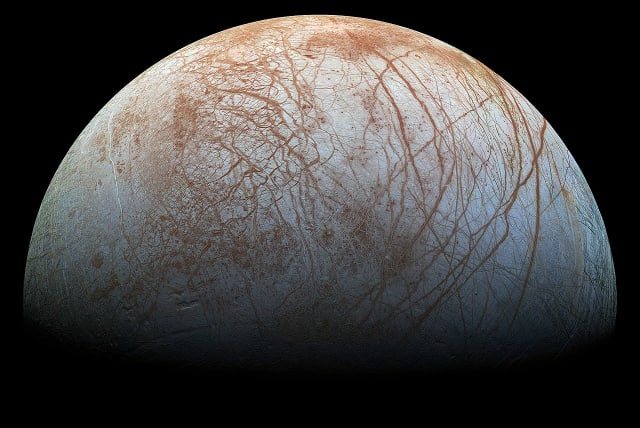NASA is sending a probe to Europa – and you can send your name with it

This is thanks to NASA's new Message in a Bottle initiative, the public can have their name engraved on a microchip in its Europa Clipper spacecraft as it heads to Jupiter's moon.
NASA is sending a probe to Europa, Jupiter's moon that could support life. But while you can't physically ride along, you can at least send your name along with it.
This is thanks to NASA's new Message in a Bottle initiative, which invites the public to sign their names onto a poem that will be engraved on the space probe, the Europa Clipper. Each name signed onto the poem will be etched onto microchips that will be mounted on the probe itself, joining it on its nearly three billion kilometer journey.
Written by US Poet Laureate Ada Limón, the poem is titled "In Praise of Mystery: A Poem for Europa" and it drives a connection between Earth and Europa with the themes of water.
Except for its title, it does not mention Jupiter's moon Europa explicitly but refers to its place among Jupiter's natural satellites, and to the commonality of water that it shares with Earth: "O second moon, we too are made of water, of vast and beckoning seas."
Notably, scientists believe Europa could be home to a vast ocean of water.
Jupiter's moons, Europa, and the search for water and ability to support life
Jupiter’s moons have long been the subject of great curiosity and the three being observed, in particular, are completely frozen over but beneath that icy layer, there are believed to be vast oceans of still liquid water. This is supported by prior magnetic field measurements. In fact, these planets could possess the solar system’s single largest quantity of water.
And since liquid oceans are also in the presence of a heat source, it poses a tantalizing possibility of finding alien life – or at the very least, of discovering whether the moons have the ability to support life.
The idea of Europa, in particular, being home to life is nothing particularly new, and has been a staple of science-fiction for many years – most notably in the book and film adaptation of 2010: Space Odyssey Two by Arthur C. Clark. However, a discovery by NASA in 2018 of water plumes supported earlier evidence of the hypothesized oceans of water beneath the ice.
NASA's Europa Clipper mission is set to launch on its voyage in October 2024 and should make it to Jupiter by 2030. It will then spend many years studying Europa, gathering data to see if it can, in fact, support life.
The European Space Agency (ESA) is also rushing to Jupiter and its moons, too, with its JUICE mission, which was launched back in April. However, due to taking a different route and using a different rocket, NASA's Europa Clipper might beat JUICE to Jupiter.
But far from being a bad thing, this actually is a first-ever opportunity.
This would be a further groundbreaking prospect as it means that for the first time, there will be two probes in the vicinity of Jupiter at the same time.
“These outer-solar system probes usually only happen around once per decade,” Prof. Yohai Kaspi from Israel's Weizmann Institute of Science, who is involved in the JUICE mission, told The Jerusalem Post at the time of JUICE's launch. “This has actually turned out interesting because if you have two points of view around Jupiter, you can do some unique experiments.
“One of the things we’re going to be doing until then are joint science missions. None of this was originally planned, but now we can initiate new experiments.”
Aaron Reich and Reuters contributed to this report.
Jerusalem Post Store
`; document.getElementById("linkPremium").innerHTML = cont; var divWithLink = document.getElementById("premium-link"); if (divWithLink !== null && divWithLink !== 'undefined') { divWithLink.style.border = "solid 1px #cb0f3e"; divWithLink.style.textAlign = "center"; divWithLink.style.marginBottom = "15px"; divWithLink.style.marginTop = "15px"; divWithLink.style.width = "100%"; divWithLink.style.backgroundColor = "#122952"; divWithLink.style.color = "#ffffff"; divWithLink.style.lineHeight = "1.5"; } } (function (v, i) { });

